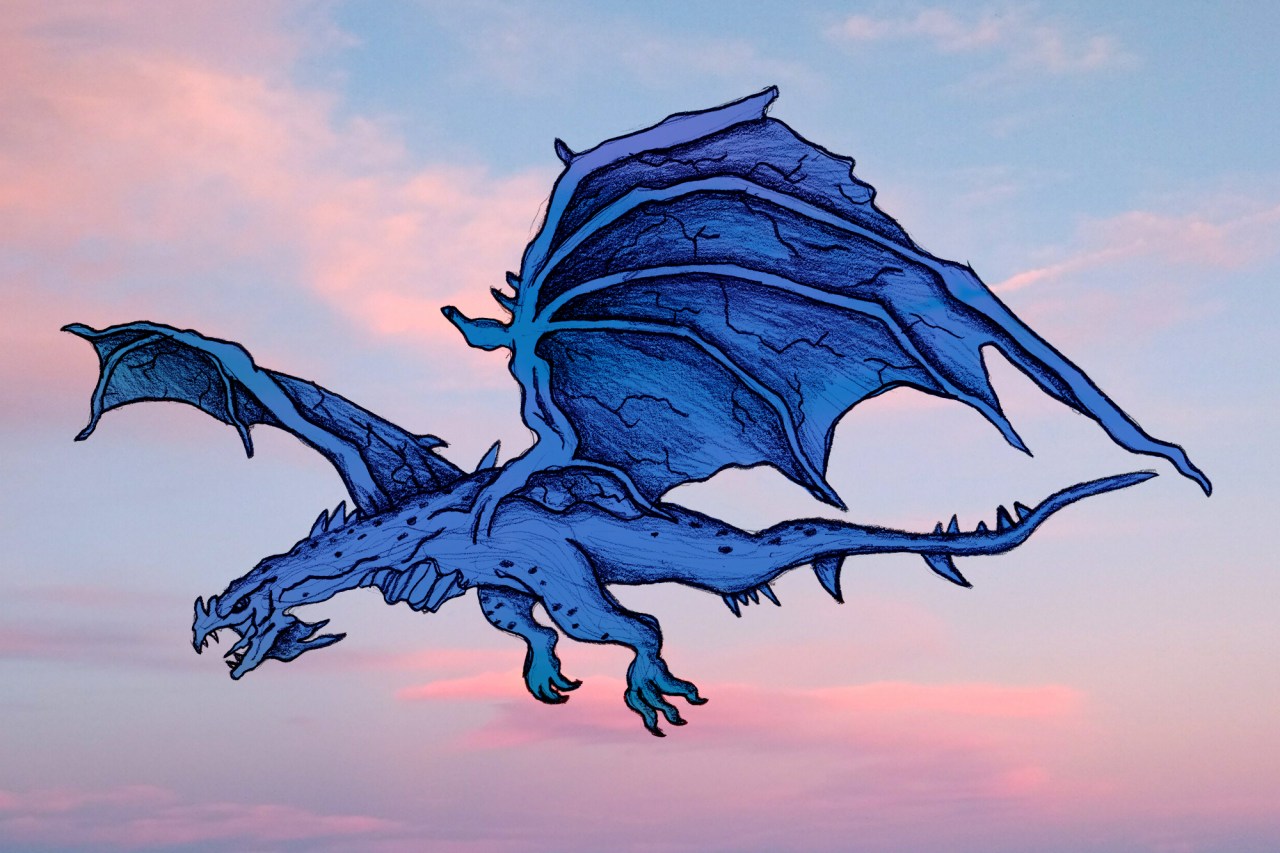Different types of dragons are determined by the number of limbs a dragon has or the way it flies.
Types Of Dragons
Like dogs and cats, not every dragon is exactly the same.
Different types of dragons are determined by the number of limbs they have or the other creatures they resemble.

Daniella Urdinlaiz
Amphitere
These dragons are a hybrid, part snake and part bird.
Depending on the depiction, they might have forelimbs, but they never have any hind limbs.
Drake
In Middle English, Drake actually means dragon.

This pop in has four limbs.
They have low slung bodies with their bellies skimming the ground.
They look similar to lizards, but are much larger.

Hydra
These dragons are water serpents with multiple heads.
Every time one is chopped off, another will grow back in its place.
Sometimes, these dragons also have additional tails, wings, or arms.
Eastern
These dragons possess great wisdom.
Wyvern
These dragons are highly aggressive.
They can either have lizard legs or bird legs.
Anthropomorphic
These dragons have human traits.
In some depictions, they will also have humanlike digits with fingernails and toes.
Not only do they possess physical human qualities, but they also take on human behaviors as well.
Dragon Beasts
These creatures are hybrids of avian species and serpents.
They can also contain the traits of other animals, so they might have cobra fangs or crocodile heads.
Western
These dragons are the servants of sorcerers.
They have crocodile scales covering their body and a barbed tail.
Their heads can contain either horns, antlers, or a crest.
They can also spit fire and other deadly fumes.
Lindworm
These dragons have the head of a horse with a mane covering their neck.
Wurm
These dragons are serpents with coils that can wrap around hills.
They can exhale noxious fumes and move at a quick speed.
you’re free to spot them by their horns, large fangs, and bright, wide eyes.
African Dragon
Some people do not actually consider these creatures to be dragons because of their shape.
They look more like serpents because they do not have any legs or arms.
They resemble giant snakes.
Oriental
Oriental dragons are not dangerous.
They protect the heavens and guard the people.
They have four legs with four toes on each foot and a serpentine body without any wings attached.
Dragonnet
These dragons look exactly the same as Western dragons except they are much smaller in size.
They range from the size of a finger to the size of a human.
Cockatrice
These dragons are either red or green with a yellow underbelly.
They have scales covering their body and leather wings.
They have poisonous breath, a beak that can kill, and eat anything they see moving.
Mythology is filled with stories of winged creatures, both good and evil.
Here are some of the most notable ones:
1.
Yamata no Orochi
This dragon comes from Japanese mythology.
It is an evil dragon with eight heads and eight tails.
Every year, he devours a maiden as a sacrifice.
Fafnir
Fafnir comes from Norse mythology.
He used to be a greedy dwarf, but a curse transformed him into a dragon.
Fucanglong
This dragon comes from Chinese mythology.
It is an underworld dragon who guards buried treasures, specifically a magical pearl that multiplies when touched.
Zmey Gorynych
Zmey Gorynych comes from Slavic mythology.
It has three heads and seven tails.
Jawzahr
Jawzahr comes from Persian mythology.
It spends all of its time in the sky, chasing around the sun and the moon.
Ladon
Ladon comes from Greek mythology.
It had 100 heads and wrapped itself around a tree to guard golden apples.
Kraks Dragon
This dragon comes from Polish folklore.
It gets its name from a peasant boy named Krak who defeated it.
Krak left a meal of three roasted sheep full of sulfur and hot spices beside the dragons cave.
When it ate the meal, its gut exploded, killing it.
Ayida-Weddo
This dragon is the rainbow serpent who holds up the heavens.
It is also said that Ayida-Weddos droppings help nourish the land and the mountains.
Kukulkan
Kulkulkan is a feathered serpent from Mesoamerica.
It is considered the protector of craftsmen, the rain-maker, the wind-blower, and the fire-bringer.
However, this peace-loving dragon was not a fan of bloodthirsty sacrifices.
Kur
Kur comes from Sumerian folklore.
It lives in the void above the earths layer and below the sea.
Because of its home underground and its wicked ways, it is commonly associated with the underworld.